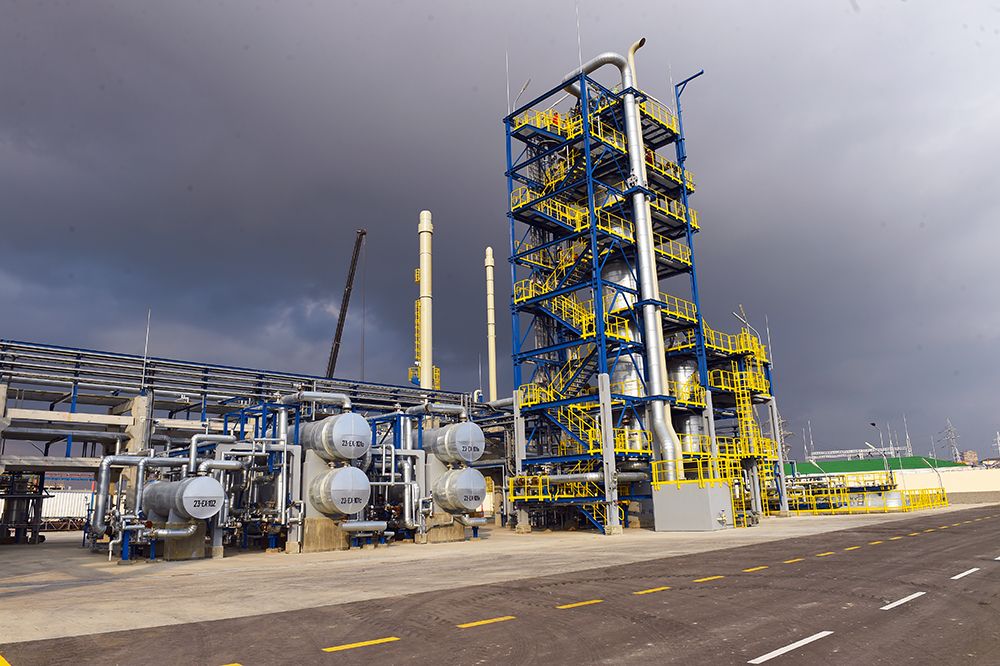SOCAR Contracts Baker Hughes to Reduce Flaring with Gas Recovery, H2S Removal Systems
Baker Hughes’ systems will reduce CO2 and recover the flare gas equivalent of up to 7 million Nm3 of methane per year and then be used as fuel within the Baku Oil Refinery.
Baker Hughes will deliver an integrated gas recovery and hydrogen sulfide (H2S) removal system to minimize routine downstream flaring at SOCAR’s Heydar Aliyev Oil Refinery in Baku, Azerbaijan by 2030. Upon completion, the project is expected to:
- Recover flare gas equivalent up to 7 million Nm3 of methane per year
- Reduce CO2 emissions by up to 11,000 tons annually
“We must reduce emissions by 45% this decade to put us on the right path to reach net zero by 2050,” said Lorenzo Simonelli, Chairman and CEO, Baker Hughes. “The industry has an imperative to act now, and we can do it with existing technology solutions that can be deployed today. This award is a testament to our companies’ shared commitment to act on emissions abatement and represents another milestone in Baker Hughes’ journey to help customers drive more sustainable and efficient operations.”
Project execution will begin soon with complete commissioning scheduled within two years.
Heydar Aliyev Oil Refinery; image credit: SOCAR

Project Details
The company will install its gas recovery and H2S removal system into the refinery’s current infrastructure to mitigate potent greenhouse gas emissions, such as methane and sulfur, and to eliminate dangerous H2S from the facility. SOCAR can use the recovered gas as refinery fuel, reducing overall fuel gas consumption, operating costs, and providing new opportunities to enhance value and efficiency. These systems are part of Baker Hughes’ emissions abatement portfolio, which improves productivity, efficiency, and delivers upscaled value across customer operations.
“Our collaboration with Baker Hughes reflects SOCAR’s commitment to advancing sustainable operations and reducing emissions across our sites,” said Rovshan Najaf, President of SOCAR. “By launching this project, we are making a tangible impact on emissions abatement and setting a benchmark for environmental responsibility. This initiative aligns with our vision for a cleaner, more efficient energy future, supporting our commitment to climate goals.”
Baker Hughes News
In early November, Baker Hughes unveiled a new oxygen analyzer to provide increased levels of stability, accuracy, and reliability—the XMO2pro. The oxygen analyzer is designed for resiliency in hazardous locations and accurately measures 0.01% - 100% of oxygen concentrations in gases; it does not contain moving parts and leverages paramagnetic technology to deliver quick, reliable, and precise detection of oxygen concentrations.
The XMO2pro requires minimal calibration and allows customers to reduce the total cost of oxygen analyzer ownership. Baker Hughes’ design is Safety Integrity Level certified and features a built-in display, making it a compact, ideal solution for tight spaces. It is also Modbus enabled, streamlining the monitoring process and offering advanced connectivity across customer networks.
And, in late October, Baker Hughes agreed to deliver 77 km of flexible pipe systems for deployment at the Petrobras-operated Brazilian pre-salt fields per an agreement signed in mid-October 2024—specifically, the Búzios, Libra, Berbigão, Sururu, and Sépia fields. The contract, with delivery beginning mid-2026, includes:
- risers and flowlines for hydrocarbon production and related gas and water injection
- support for equipment storage, maintenance, and installation
The systems will manage stress-induced corrosion cracking from CO2, which often occurs as gas is reinjected into wells to reduce flaring and enhance oil recovery. Baker Hughes’ plant in Niteroi, Brazil will manufacture the flexible pipe systems.